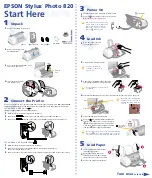
Solution
Three NVM values can be adjusted to reduce dry ink/toner consumption based on user
requirements. Refer to the following table. From the first column of the table, select the solution
which best fits user requirements. To implement the appropriate outcome for your environment,
contact Xerox Technical Customer Support.
Important:
NVM values must be set or changed only by the customer support
representative.
User Requirement
Solution
1. Image Quality (IQ) Priority
These are the press default settings which provide
optimum IQ output, but increase dry ink/toner
consumption and can reduce productivity.
For this user requirement, to change the NVM
values for 762–075, 752–175 and 762–098,
contact Xerox Technical Customer Support.
2. Middle Setting
This is the recommended setting.
These settings configure the press for less dry ink/toner
usage if image quality is not the highest priority. IQ can
be reduced slightly.
For this user requirement, to change the NVM
values for 762-075, 752–175 and 762–098,
contact Xerox Technical Customer Support.
3. Lower Toner Consumption Priority
These settings decrease dry ink/toner usage and
increase productivity, but can result in degraded IQ.
For this user requirement, to change the NVM
values for 762–075, contact Xerox Technical
Customer Support. For the NVM values 752–175
and 762–098, no change is required.
IIm
maaggee Q
Quuaalliittyy TTrroouubblleesshhoooottiinngg
Perform these actions first to improve image quality:
• Manage the stock in use. Ensure that the media used is approved, within press specifications and
is clean.
• Ensure the correct media is properly loaded in the paper tray.
• Run print samples and evaluate the defect. From the following table, determine which problem
description matches the IQ defect and perform the appropriate corrective actions.
C
Coonnttaam
miinnaattiioonn oonn tthhee B
Baacckk SSiiddee ooff PPrriinnttss
Problem
The back side of the printed output contains contamination. The contamination is a specific toner
defect of 10–15 mm wide running from long-edge (LE) or trail-edge (TE), and is near the outboard
(OB) side of the print.
239
















































